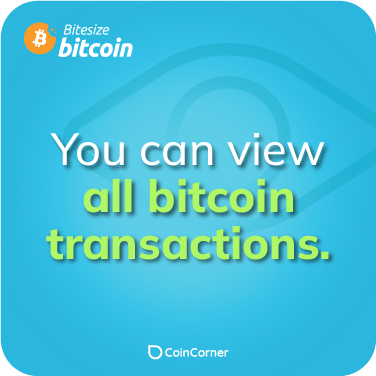Can I view bitcoin transactions?

You can view all Bitcoin transactions by accessing a public and transparent ledger called the "Bitcoin blockchain." This ledger contains a comprehensive record of all Bitcoin transactions ever conducted, from the very first one to the most recent. Here's how you can explore Bitcoin transactions:
Blockchain Explorers:
Blockchain explorers are online tools that allow users to search, view, and analyze the data on the Bitcoin blockchain. Popular blockchain explorers include Blockstream's "Block Explorer," Blockchair, and Blockchain.info. These platforms offer user-friendly interfaces for exploring transactions.
Transaction Details:
To view a specific Bitcoin transaction, you need the transaction ID (also known as a hash) or the Bitcoin address associated with the transaction. Enter this information into a blockchain explorer's search bar, and it will provide you with detailed information about that specific transaction.
Block Information:
The blockchain is organized into blocks, each containing a set of transactions. Blockchain explorers allow you to explore individual blocks, providing insights into the transactions included in each block. You can see the timestamp, the number of transactions, and the total value transacted in that block.
Transaction History:
You can track the transaction history of a particular Bitcoin address. By entering a Bitcoin address into a blockchain explorer, you can see all the transactions associated with that address, including both incoming and outgoing transactions.
Transaction Status:
Bitcoin transactions can have different statuses. You can see whether a transaction is pending, confirmed, or has been included in a block. This information is crucial for understanding the progress of a transaction.
Transaction Amounts and Fees:
Blockchain explorers provide information about the amount of Bitcoin sent and received in a transaction. Additionally, you can see the transaction fee paid by the sender, which is an important aspect of Bitcoin transactions.
Blockchain Analytics:
Some blockchain explorers offer advanced analytics and visual representations of transaction data. This can be useful for tracking the movement of large amounts of Bitcoin or understanding broader network trends.
Real-Time Data:
Blockchain explorers update in real-time, so you can monitor the network and transactions as they happen. You can see the most recent transactions and the latest blocks added to the blockchain.
Educational Resource:
Beyond viewing transactions, blockchain explorers can serve as valuable educational tools. They provide insights into how Bitcoin transactions work, the structure of the blockchain, and the transparency and security features of the network.
It's important to note that while Bitcoin transactions are transparent and traceable, they are pseudonymous. Bitcoin addresses do not directly reveal the identity of the individuals or entities involved in a transaction. However, the transparency of the blockchain means that transactions can be traced from one address to another.
Blockchain Explorers:
Blockchain explorers are online tools that allow users to search, view, and analyze the data on the Bitcoin blockchain. Popular blockchain explorers include Blockstream's "Block Explorer," Blockchair, and Blockchain.info. These platforms offer user-friendly interfaces for exploring transactions.
Transaction Details:
To view a specific Bitcoin transaction, you need the transaction ID (also known as a hash) or the Bitcoin address associated with the transaction. Enter this information into a blockchain explorer's search bar, and it will provide you with detailed information about that specific transaction.
Block Information:
The blockchain is organized into blocks, each containing a set of transactions. Blockchain explorers allow you to explore individual blocks, providing insights into the transactions included in each block. You can see the timestamp, the number of transactions, and the total value transacted in that block.
Transaction History:
You can track the transaction history of a particular Bitcoin address. By entering a Bitcoin address into a blockchain explorer, you can see all the transactions associated with that address, including both incoming and outgoing transactions.
Transaction Status:
Bitcoin transactions can have different statuses. You can see whether a transaction is pending, confirmed, or has been included in a block. This information is crucial for understanding the progress of a transaction.
Transaction Amounts and Fees:
Blockchain explorers provide information about the amount of Bitcoin sent and received in a transaction. Additionally, you can see the transaction fee paid by the sender, which is an important aspect of Bitcoin transactions.
Blockchain Analytics:
Some blockchain explorers offer advanced analytics and visual representations of transaction data. This can be useful for tracking the movement of large amounts of Bitcoin or understanding broader network trends.
Real-Time Data:
Blockchain explorers update in real-time, so you can monitor the network and transactions as they happen. You can see the most recent transactions and the latest blocks added to the blockchain.
Educational Resource:
Beyond viewing transactions, blockchain explorers can serve as valuable educational tools. They provide insights into how Bitcoin transactions work, the structure of the blockchain, and the transparency and security features of the network.
It's important to note that while Bitcoin transactions are transparent and traceable, they are pseudonymous. Bitcoin addresses do not directly reveal the identity of the individuals or entities involved in a transaction. However, the transparency of the blockchain means that transactions can be traced from one address to another.
Share this fact:





